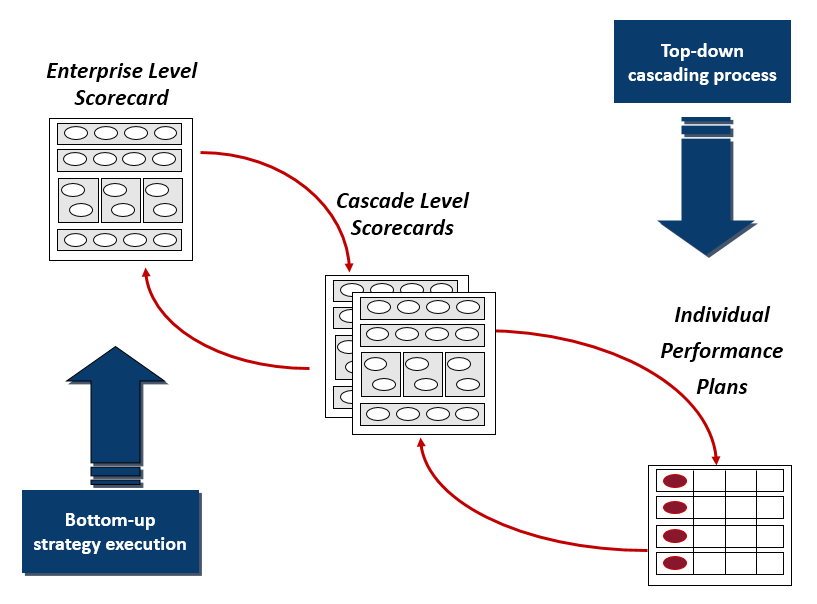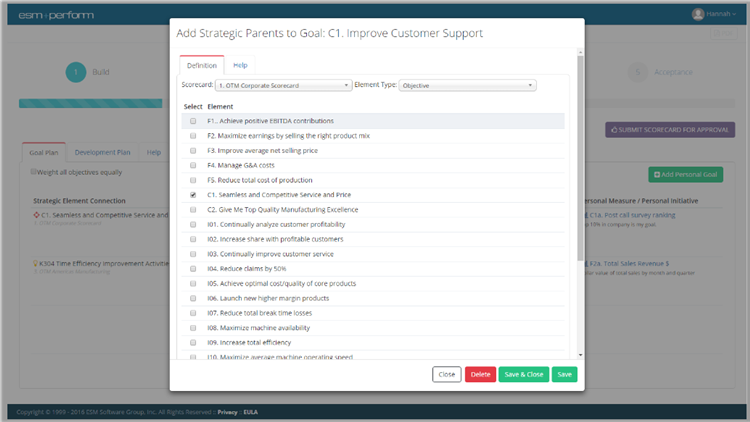"Make strategy everyone's job," a refrain repeated by Dr. David Norton in his public appearances and in the book co-authored with Robert Kaplan “Strategy-Focused Organization."
So why is this so important? The logic goes that if the people who are working day to day don’t know what the strategy is and more importantly, how they contribute to strategy implementation, they cannot help.
The first step in the process of engaging the people in the organization in the strategy implementation process is to engage them through a robust communication program. They should understand the "why” and the “how” of the strategy. In other words, employees should understand why the objectives are critical for future success of the organization and how the organization intends to address these critical needs. The communication leader is the head of the organization and strategy implementation must be seen as his/her priority. The leadership team is also critical in ensuring the organizational units contribute to the implementation program. They must demonstrate both consensus and commitment. The leadership team, as well as, the chief executive must “walk the talk”. Leadership behavior and actions are tangible evidence of importance and are the real communication program.
Assuming the Strategic Communication Program is comprehensive and of high quality, what is the next step? I would contend that the next step is to engage the workforce in the process of strategy implementation. There is evidence that if done well, the potential for strategic success is dramatically improved. This was evidenced early in the Balanced Scorecard implementation process when implementation best practice audits where compared to strategic results such as achievement of customer outcomes and ultimately financial outcomes (private sector) or mission outcomes (not-for-profit and government sectors), employee engagement was tightly linked to strategic success. These audits demonstrated that single most divergent factor surrounded the third principle of the Strategy-Focused Organization “Make strategy everyone’s job” (reference The Strategy Focused Organization, Robert S. Kaplan and David P. Norton, Harvard Business School Press, 2001.) It was also the most dramatic differentiation between BSC Hall of Fame Organizations and others using this strategy implementation process.
OK, so how does an individual objective process work?

For many organizations it is not the introduction of a new process to manage employee performance. For those with an ongoing performance management process (such as Management by Objectives, Management by Results, or other system that sets individual performance expectations), it is more about the “content” used and not the “vehicle” used. It is about linking strategic priorities to the individual performance expectations.
In this effort to link strategy to the individual the following steps may be useful in tailoring your current employee evaluation process:
- There should be a clear understanding regarding the individual responsibilities. Some tasks are needed to do the day to day job. These can be considered threshold tasks and are typically spelled out in the job/position description. They are the skill, knowledge and abilities use for recruitment, selection and manage daily performance in the job. They are job related expectations and managed by the supervisor.
- There are certain tasks in the “day job” or added to the “day job” that relate to the achievement of an organizational strategic objective – typically found in the Internal and Talent and Technology Perspectives of a Balanced Scorecard.
Depending on the size, complexity and organizational structure, these potential individual contributions can be derived from the corporate or unit scorecard. In large organizations the rule of thumb is to cascade and align the corporate objectives to the operating/functional unit and then to the Individual. You are trying to get to the level in the organization where the individual works and can define their contribution. When you are confident that level of understanding, then you can use your individual performance management process to set individual objectives that contribute to the Unit’s and Organization’s strategic success. Best practice suggests no more than 3 – 5 individual objectives. My experience is that less is better than more.

If you believe that once cascaded there is still a communications gap, lack of clarity re: individual contribution to organizational objectives, then use a decomposition technique such as Value Tree or Critical Success Factor techniques to define contributing operational tasks that link to the success of the strategic objective. This approach can be useful in pinpointing individual, job related contributions to organizational objectives.
- Having set individual objectives there is an additional managerial task to ensure there is proper organizational coverage to address the organizational objectives. This is a managerial/supervisory responsibility to review individual contributions objectives compared to the units objectives. This is a process of cross walking unit strategic requirements with the unit’s individual objectives. This step reviews and evaluates coverage, as well as, the level of support (performance targets) to ensure the unit’s strategic contribution.
- Finally, as part of the employee performance review process, the individual needs to know “how did I do”. This is not a once a year or a “got ya” process. The individual optimally would be able to monitor their own performance against their objectives and know the performance level. This process provides periodic discussions (maybe quarterly in a steady state or as a problem arises) between the individual and the supervisor to review current performance it is as much a counseling/support session than an evaluation session. It is during these sessions, that the individual has the opportunity to analyze and explain their performance, request support and learn what it takes to meet the level of performance expected.
These steps are used to define and ensure strategic contribution at the individual level. This task can be daunting. However, with the use of technology, the details and linkage of such a process can be managed if not enhanced. Technology does not relieve the organization of its responsibility to ensure alignment, but it clearly enables the organization to manage strategy from the Corporation to the Individual. Using the ESM+Perform you can see in the illustration below how alignment can be managed from the “Board Room to the Back Room”.
By following these simple steps, individuals may be better equipped to raise their hand and describe their contribution to the Strategy. They will have made strategy part of their everyday job.








